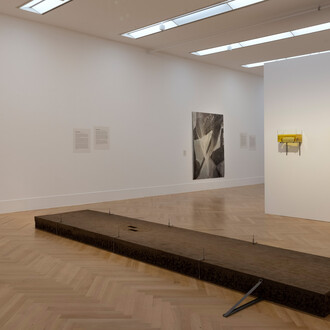Ferdinand Hodler (1853-1918) is one of the most successful Swiss artists of the late 19th and early 20th century and was perceived as one of the most important painters of modernism by his contemporaries. Since the last extensive monographic exhibition in Munich and Wuppertal in 1999/2000, there has not been a comprehensive presentation of Hodler’s oeuvre in Germany. The exhibition in Bonn provides the opportunity to focus on different aspects and to show works that have either never been on display in Germany or at least not in a long time.
Why don‘t you become a painter? This is a healthy profession, spending much time in fresh air.
(Ferdinand Hodler)
About 80, partly large-size paintings and numerous drawings illustrate the stages and events in the artist’s career that led to his both national and international success. The show also examines the strategies Hodler employed to be acknowledged and appreciated as an autonomous artist. His training, journeys abroad, participation in competitions, scandals, and exhibitions are among the key topics. Intermediaries had a deciding influence on Hodler’s artistic career: his contacts with collectors as well as the art trade and art associations contributed to the successful propagation of his art. Besides Vienna and Paris, Germany played an essential role. While largely ignored in previous presentations on Ferdinand Hodler, the exhibition pays tribute to this aspect of his rise to fame. The formal distinctions of early modernism, such as the confined forms, expansive painting style, parallel structures, and rhythm, are another thematic priority. The exhibition covers all genres including landscapes, portraits, figures, and historical themes. An array of photographs documents Hodler’s biography and provides insights into his family life, studio, working method, and circle of friends.
Ferdinand Hodler began his artistic career as a veduta painter at Lake Thun with Ferdinand Sommer. In Geneva, Barthelémy Menn introduced him to painting en plein air and portrait art. He spent several months in Spain to deepen his knowledge at the Prado in Madrid, where he studied Flemish, Italian, and Spanish painting and developed a new understanding of light and colour. At the age of 23, he took part in national competitions, which brought him prizes and introduced his work to a wide audience in Switzerland. His painting Die Nacht (Night) caused a scandal, but also led to his first successes abroad, and was greatly admired in artistic circles. In 1904, the 19th exhibition of the Vienna Secession triggered his international breakthrough. Carl Reininghaus, an Austrian patron of the arts and collector, bought several of Hodler’s pictures, thus making him a millionaire overnight. After 1900, an increasing number of German art institutions took an interest in Hodler. The Deutscher Künstlerbund (Association of German Artists) dedicated an entire hall to his works at the Berlin exhibition in 1905. Further Secession exhibitions followed in Munich and Berlin. The German art associations and art dealers had also taken notice of Hodler and organised several group and solo exhibitions with his works between 1907 and 1914; the exhibition reviews in the German press introduced Hodler’s art to a wide audience. The painter was commissioned by German art dealers and collectors, and German museums such as the Staatsgalerie Stuttgart and the Städel Museum in Frankfurt am Main purchased his works.
In reviews of the time, Hodler is characterised as the painter of modernism. Among the aspects perceived as modern by the art critics were his tendency to apply ornamentation, the formal repetitions, the distinct outlines as well as his choice of colours. Hodler’s monumental painting, which is characterised by extensive colour fields, clear contours, and its impressive effect from a distance, inspired great interest in Germany. The commissions for the expansive murals for the Friedrich Schiller University in Jena in 1907 and the townhall in Hanover in 1911 marked the pinnacle of his fame as a painter of the monumental style. Hodler’s success in Germany came to a sudden end after he signed a protest letter against the bombardment of Reims Cathedral by German soldiers. However, this ostracism did not affect Hodler’s career outside of Germany. Collectors such as Gertrud Müller and her brother Josef, Willy Russ-Young, and Arthur Hahnloser supported Hodler with their acquisitions and commissions. Hodler died in 1918 at the age of 65, by which time he had produced about 2000 paintings.
















